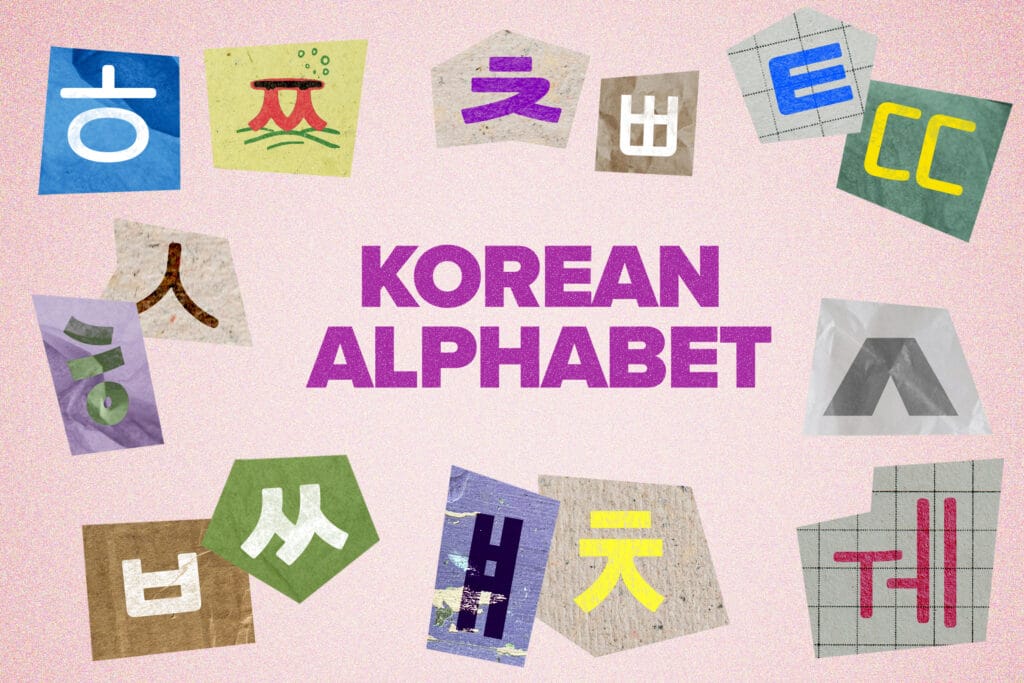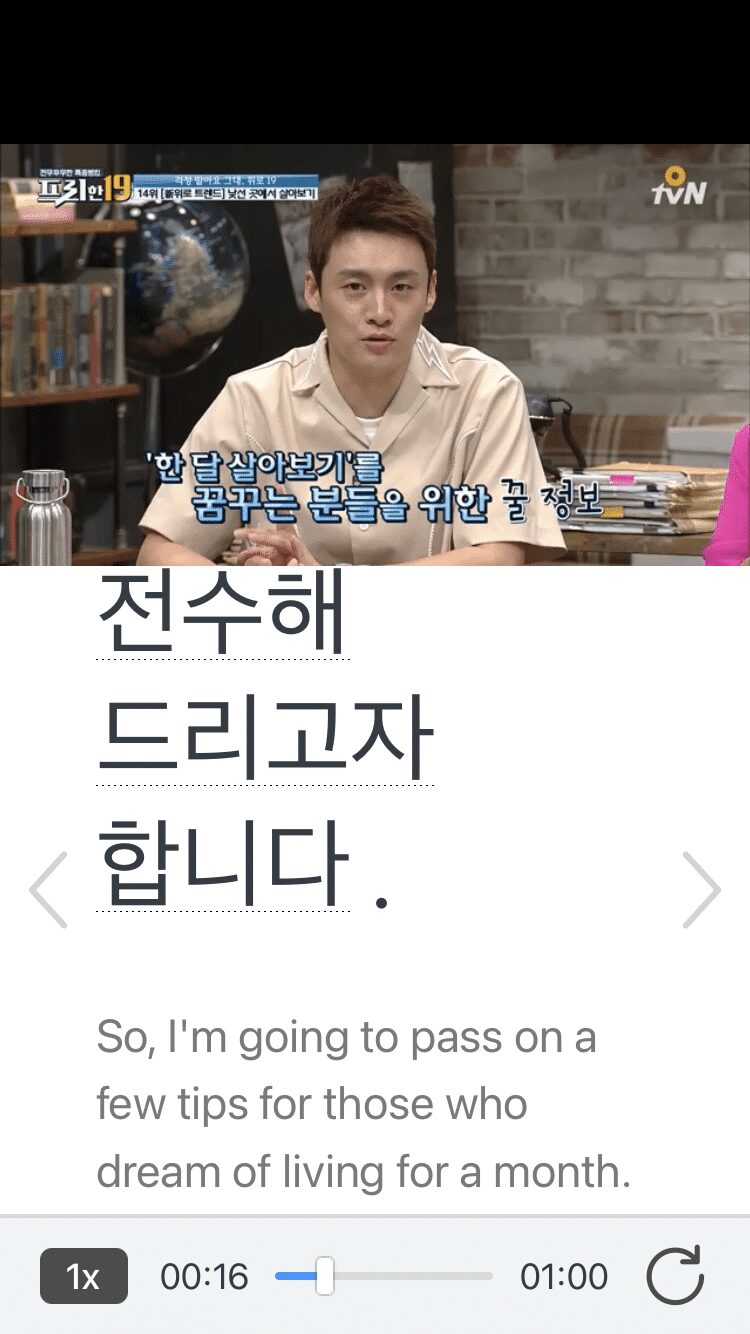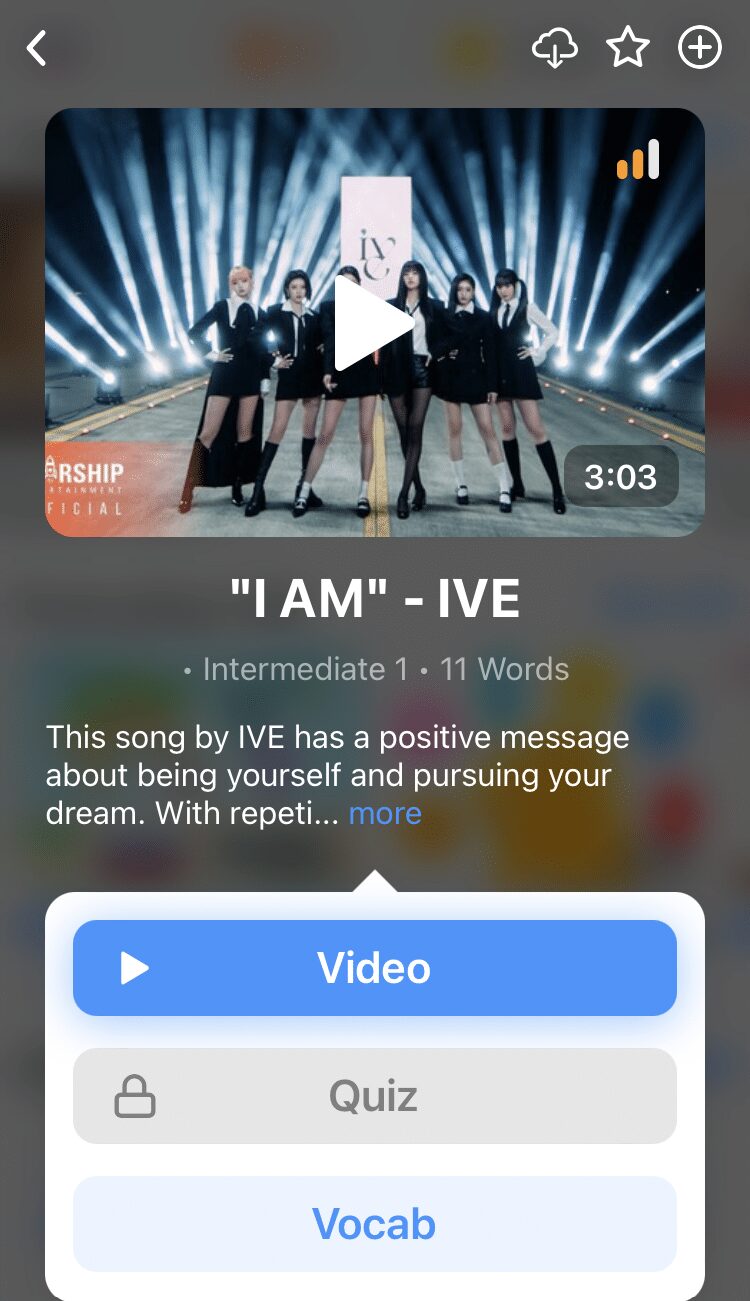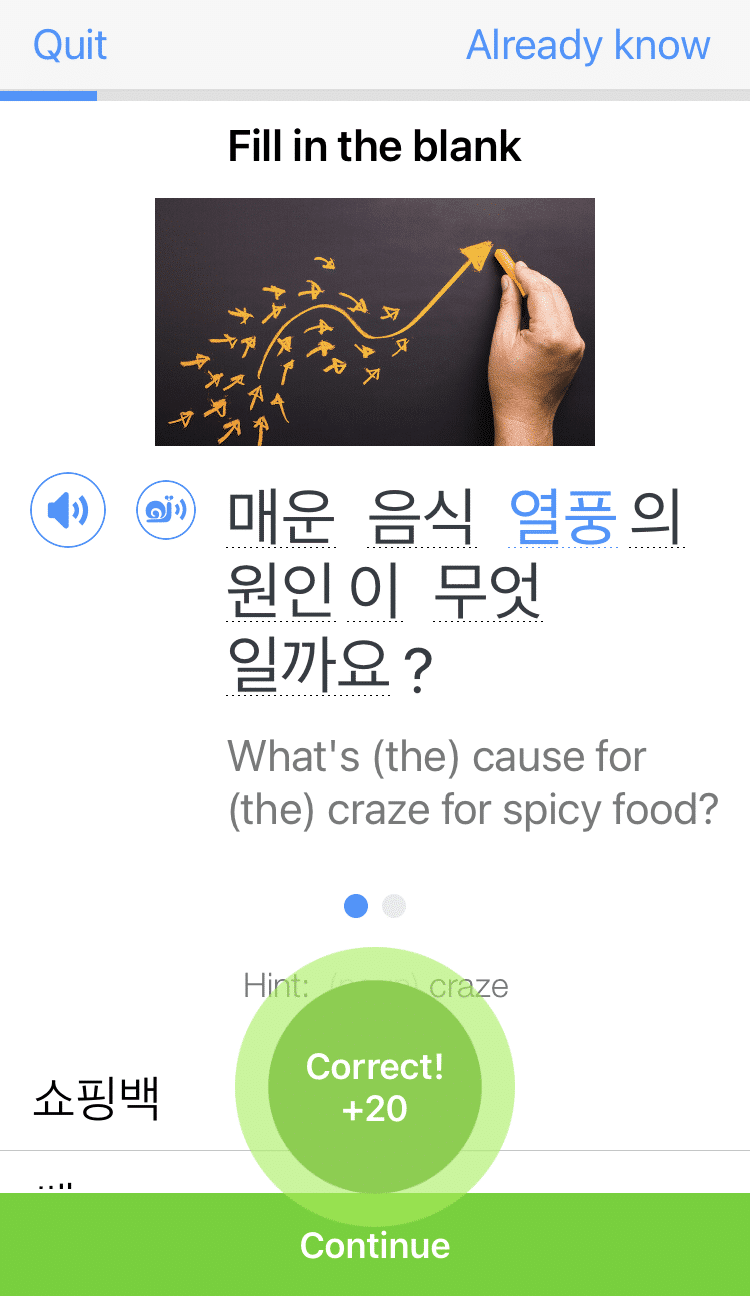Hangul | The Korean Alphabet

Meet Hangul ( 한글 ), a wonderfully easy writing system which some proclaim to be the best foreign language alphabet.
Before Hangul was invented, the primary writing system for Korean natives was based on Chinese characters. It was mostly the upper-class who knew how to read and write, largely because the countless sophisticated Chinese symbols used weren’t easily transcribed or understood by the common folk.
King Sejong, the fourth king of the Joseon Dynasty, started the campaign to create a more accommodating native writing system. With the combined efforts of the most intelligent advisors at the time, the Hangul alphabet (originally named 훈민정음 ) was created.
And now, centuries later, Hangul remains as elegant and well-loved by both Korean natives and Korean language learners as ever.
Download: This blog post is available as a convenient and portable PDF that you can take anywhere. Click here to get a copy. (Download)
Consonants
Consonants in Korean are called 자음. And luckily, most of them can be compared to English alphabet letters.
Basic Consonants
There are 14 basic consonants in total. I’ll present the consonant, in parentheses how it’s pronounced as a letter of the alphabet, and then its closest English sound approximate.
ㄱ
(giyeok) – G
This gun-shaped consonant sounds a lot like the English G.
ㄴ
(ni-eun) – N
It looks like a flipped-over ㄱ, but it sounds identical to the English N.
ㄷ
(di-geut) – D
It sounds like a softer English D–when enunciating, your tongue should lightly (and I mean lightly!) tap the back of your top teeth.
ㄹ
(ri-eul) – R / L
This snake-like letter sounds like the English R, but with a softer touch. In fact, you can consider it a mix between the R and L sounds. When enunciating, your tongue should make quick flicking contact with the top of your mouth.
ㅁ
(mi-eum) – M
It sounds like the English M. Appropriately, the shape of this consonant resembles an open mouth.
ㅂ
(bi-eup) – B
It looks like a ㅁ with its arms up! It sounds like the English B, and actually doesn’t look too different from the lower-case “b.”
ㅅ
(shi-ot) – S
This consonant is a bit tricky in that it can sound like a regular English S or more like SH. It depends on its placement within a syllable, as well as the vowel following it. It can even take on a blunt T sound, if it’s the last consonant of a syllable.
ㅇ
(i-eung) – Placeholder / NG
This consonant is a unique one in that it doesn’t really carry a unique sound (fittingly, it looks a bit like a zero). It’s actually known as the “silent consonant,” used as a placeholder before a vowel sound. It takes on a NG sound when it’s the final consonant of a syllable.
ㅈ
(ji-eut) – J
It sounds like an English J, and kind of looks like it too if it was attempting a leg split!
ㅊ
(chi-eut) – CH
It’s often confused with ㅈ, but pay careful attention to that distinguishing horizontal line on top.
ㅋ
(ki-euk) – K
It looks like a ㄱ with a notch, which can give you a clue to give it an extra, harsher enunciation. The G sound becomes a sharp K sound.
ㅌ
(ti-eut) – T
It looks like a ㄷ with a notch, and so like ㅋ, this indicates that you’ll give it stronger enunciation. The D sound becomes a hard T sound. Use your teeth!
ㅍ
(pi-eup) – P
It looks a bit like a Greek-style pillar, so you can use that as a visual clue to how it sounds!
ㅎ
(hi-eut) – H
It looks like a head wearing a little hat (actually, a hat that resembles the traditional Korean one known as 갓).
Double Consonants
These are exactly what they sound like: two of a consonant! However, they actually act like one consonant within a syllable.
There are five basic consonants that have double consonant forms:
- ㄱ → ㄲ (gg or kk)
- ㄷ → ㄸ (dd or tt)
- ㅅ→ ㅆ (ss)
- ㅈ → ㅉ (jj)
- ㅂ → ㅃ (bb or pp)
The way these consonants sound are also, essentially, “double” that of its basic consonant. This means a sharper and more aspirated enunciation.
The Articulation of Korean Consonants
If you’ve already practiced saying these consonants out loud, you might notice something curious. Somehow, the shape of the consonant seems to feel “intuitive” to how they sound.
Many linguists argue that this isn’t a coincidence. The phonemic articulation of Korean consonants somewhat correspond to how they’re transcribed.
Here are five phonemic vocalization categories:
- Velar: the back of the tongue makes contact with the back roof of your mouth
- Alveolar: the tongue makes contact with the gummy ridge behind your front top teeth
- Bilabial: both lips make contact with each other
- Dental: the tongue makes contact with the back of your front top teeth
- Glottal: the space between your vocal folds open and close
And here are the Korean consonants, organized by their corresponding phonemic vocalization:
- Velar consonants: ㄱ and ㅋ. Notice how they resemble the arch of your tongue against the back of your mouth.
- Alveolar consonants: ㄴ, ㄷ, ㅌ and ㄹ. They capture both the flatness and curve of the tongue as it makes contact with the gummy ridge.
- Bilabial consonants: ㅁ, ㅂ and ㅍ. They resemble the shape of the mouth and or lips.
- Dental consonants: ㅅ, ㅈ, ㅊ. They have a tooth-like silhouette.
- Glottal consonants: ㅇ and ㅎ. They are round, like the opening between your vocal folds.
Talk about nifty! Of course, you don’t have to necessarily know these categories, but this is still helpful information on how to properly enunciate the letters.
Vowels
Vowels in Korean are called 모음. They’re often classified based on their shape and how they’re written
Keep in mind that vowels in Korean are more like “mixed” English vowel sounds. We can’t distinguish them strictly as letters A, E, I, O or U.
I’ll present the vowel, its romanized pronunciation in parentheses, and then a brief explanation on how it sounds.
Vertical Vowels
ㅏ
(a)
Sounds like AH as pronounced in “father.”
ㅑ
(ya)
Sounds like YA as pronounced in “yacht.”
ㅓ
(eo)
Sounds like UH like the O in “other”, but it’s romanized as eo.
ㅕ
(yeo)
Sounds like YUH like in “yuck,” but it’s romanized as yeo.
ㅣ
(i)
Sounds like EE as in “teeth.” It can also be transcribed sometimes as ee instead of i.
Horizontal Vowels
ㅗ
(o)
Sounds like OH as in, well, “oh.”
ㅛ
(yo)
Sounds like YO as in “yogurt.”
ㅜ
(u)
Sounds like OO as in “boot.”
ㅠ
(yu)
Sounds just like the word “you.”
ㅡ
(eu)
There isn’t an exact English letter equivalent, but it’s basically a more “flatlined” ㅜ sound. Pronounce ㅜ normally, and while doing so, tug down and flatten your bottom lip more (enough so that your bottom teeth flash out).
Double or Complex Vowels
That’s right, it’s not just Korean consonants that get to double up!
Double Korean vowels, or complex vowels, are called such because they consist of two written vowels and essentially combine two vowel sounds. Like double consonants, double vowels are also considered as just one vowel when written.
You’ll notice that some of these vowels will sound exactly alike. Really, even Korean natives have a hard time distinguishing between them, so they often don’t in either speech or text.
ㅐ
(ae)
Combination ofㅏ andㅣ. Pronounced EH as the E in “egg.”
ㅒ
(yae)
Combination of ㅑ and ㅣ. Pronounced YEH as the Y in “yes.”
ㅔ
(e)
Combination ofㅓandㅣ, but actually sounds exactly likeㅐ.
ㅖ
(ye)
Combination of ㅕ andㅣ. Sounds exactly likeㅒ.
ㅚ
(oe)
Combination of ㅗ andㅣ. Pronounced WEH as in “welding.”
ㅟ
(wi)
Combination of ㅜ and ㅣ. Pronounced OO-EE as the “ewie” in “Stewie.”
ㅢ
(ui)
Combination of ㅡ and ㅣ. Sounds somewhat similar to ㅟ, but “flatter.” As with just the vowel ㅡ , make sure your bottom lip tugs down when enunciating, almost as if you’re grimacing.
ㅘ
(wa)
Combination of ㅗ and ㅏ. Pronounced WAH as in “water.”
ㅝ
(wo or weo)
Combination of ㅜ and ㅓ. Pronounced WO as in “wonder.”
ㅙ
(wae)
Combination of ㅗ and ㅐ. Sounds like ㅚ.
ㅞ
(we)
Combination of ㅜ and ㅔ. Sounds like ㅚ and ㅙ .
A great way of familiarizing yourself with all these letters and sounds is to watch videos with subtitles, so you can read along while listening to how everything is actually pronounced. YouTube or Netflix is good for this, but for a little extra learning support, you could try out something like FluentU.
How to Make Korean Syllables out of Hangul Characters
Hangul letters aren’t just simple to write out individually. Forming them into actual syllables is also a very easy process.
You can check out our dedicated lesson about Korean syllables are here:
3 Steps to Learn Korean Syllable Structure, Order and Pronunciation | FluentU Korean Blog
Korean syllables are not as complicated as they might seem. This quick three-step guide will get you started on putting together Korean syllables yourself. We’ll focus on…
To get a quick sense of how they work, here are the three basic rules.
1. A syllable must have a consonant and a vowel
For any Korean syllable, there must be at least one consonant and one vowel. The vowel follows the consonant. You can’t have any syllable that consists of purely consonants.
However, you can have syllables that do just consist of vowel sounds. In these cases, it’s the silent consonant ㅇ that takes the position of the main consonant.
2. A syllable must have two to four characters
A Korean syllable consists of a minimum of two and a maximum of four Hangul letters. Most syllables are composed of two to three letters. Remember that a double consonant and a double vowel both count as one letter.
3. Korean syllables are written out as blocks
In English, we write the letters of a word from left to right, side by side. In Korean, Hangul letters within a syllable are written in a square format, and all syllables should be of the same square size. See these examples:
Notice how the third and fourth letters must “shrink” in order to squeeze into the square shape.
You can also see that whether the syllable’s vowel is horizontal or vertical will also affect the orientation of the consonants.
These are just the basics of how to write Korean syllables with Hangul letters. For a more in-depth guide on their structure, check out this post.
There’s a reason why Hangul is a fan favorite among language enthusiasts. Perhaps this guide has made it clear why.
Many learners tend to learn this Korean alphabet quite quickly, and I’m sure you will as well!
Congratulations again on deciding to take your first steps to learn Korean. From this point forward, things will get even more fun!
And One More Thing...
If you enjoyed this post, you're already halfway to having the time of your life learning Korean with FluentU!
FluentU makes it possible to learn with K-pop videos, funny commercials, entertaining web series and more. Just a quick look will give you an idea of the variety of FluentU videos on offer:

FluentU really takes the grunt work out of learning languages, leaving you with nothing but engaging, effective and efficient learning. It's already hand-picked the best videos for you (which are organized by level and topic), so all you have to do is simply choose any video that strikes your fancy to get started.
Each word in the interactive captions comes with a definition, audio, image, example sentences and more.

Access a complete interactive transcript of every video under the Dialogue tab, and easily review words and phrases from the video under Vocab.

You can use FluentU’s unique Quiz Mode to learn the vocabulary and phrases from the video through fun questions.

FluentU keeps track of what you're learning, and tells you exactly when it's time for review, giving you a 100% personalized experience.
Review sessions use video context to help embed the words in your memory.
Start using the FluentU website on your computer or tablet or, better yet, download the FluentU app from the iTunes or Google Play store. Click here to take advantage of our current sale! (Expires at the end of this month.)







